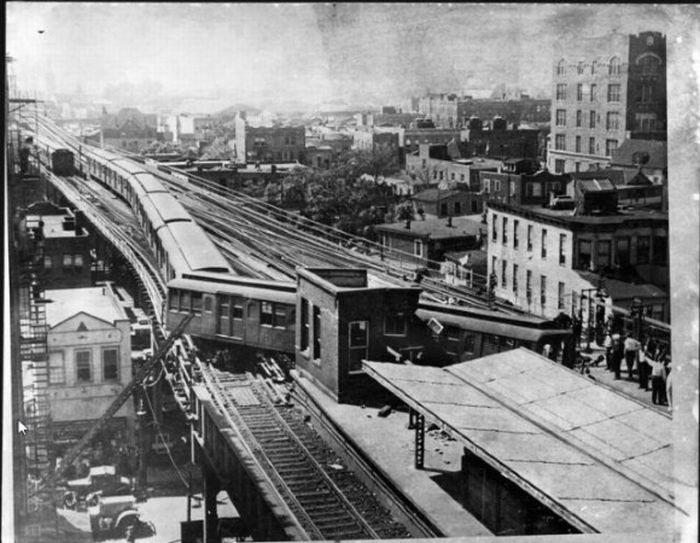|
|
History: The New York City Subway, United States
|
A demonstration for an underground transit system in New York City was first built by Alfred Ely Beach in 1869. His Beach Pneumatic Transit only extended 312 feet (95 m) under Broadway in Lower Manhattan and exhibited his idea for a subway propelled by pneumatic tube technology. The tunnel was never extended for political and financial reasons, although extensions had been planned to take the tunnel southward to The Battery and northwards towards the Harlem River. The Beach subway was demolished when the BMT Broadway Line was built in the 1910s; thus, it was not integrated into the New York City Subway system.
The first underground line of the subway opened on October 27, 1904, almost 35 years after the opening of the first elevated line in New York City, which became the IRT Ninth Avenue Line. The Great Blizzard of 1888 helped demonstrate the benefits of an underground transportation system. The oldest structure still in use opened in 1885 as part of the BMT Lexington Avenue Line in Brooklyn and is now part of the BMT Jamaica Line. The oldest right-of-way, that of the BMT West End Line, was in use in 1863 as a steam railroad called the Brooklyn, Bath and Coney Island Rail Road.
By the time the first subway opened, the lines had been consolidated into two privately owned systems, the Brooklyn Rapid Transit Company (BRT, later Brooklyn-Manhattan Transit Corporation, BMT) and the Interborough Rapid Transit Company (IRT). The city was closely involved: all lines built for the IRT and most other lines built or improved for the BRT after 1913 were built by the city and leased to the companies. The first line of the city-owned and operated Independent Subway System (IND) opened in 1932; this system was intended to compete with the private systems and allow some of the elevated railways to be torn down, but kept within the core of the City due to the low amount of startup capital provided to the municipal Board of Transportation, the later MTA, by the state. This required it to be run 'at cost', necessitating fares up to double the five cent fare popular at the time.
In 1940, the two private systems were bought by the city and some elevated lines closed immediately while others closed soon after. Integration was slow, but several connections were built between the IND and BMT, and now operate as one division called the B Division. Since the IRT tunnel segments are too small and stations too narrow to accommodate "B" Division cars, and contain curves too sharp for "B" Division cars, the IRT remains its own division, A Division.
|
|









